TAYO NA SA ANGONO!
Angono Town Hall
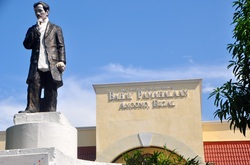
click to zoom
If you wish, we can start the day with a courtesy call at the Angono Town Hall. Ask local leaders how they are running this town.
Rizal Province has gained a reputation as the "Cradle of Philippine Art," owing to its artists' communities and folk festivals, starting with the Philippine National Hero Jose Rizal, himself an artist, after whom the province was named. Its other creative sons include National Artists Vicente Manansala, Carlos "Botong" Francisco and Lucio San Pedro along with Nemesio Miranda, Jose Blanco and Rafael Pacheco among others.
Rizal Province has gained a reputation as the "Cradle of Philippine Art," owing to its artists' communities and folk festivals, starting with the Philippine National Hero Jose Rizal, himself an artist, after whom the province was named. Its other creative sons include National Artists Vicente Manansala, Carlos "Botong" Francisco and Lucio San Pedro along with Nemesio Miranda, Jose Blanco and Rafael Pacheco among others.
Street Art
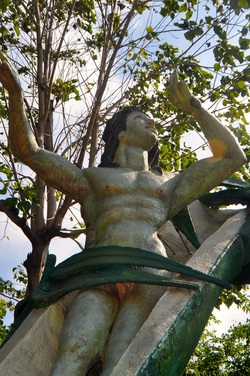
click to zoom
Where else in the Phillipines can we do a walking art tour but in Angono. Near the Town Hall is a sculpture of "Malakas at Maganda" and further down the street of Dona Aurora Ibaba is a whole stretch of wall art. Almost all exterior walls and fences of houses in this area (towards the church) are finished with mural paintings and sculptures which you will find very informative for they showcase relics of all painting works of Carlos "Botong" Francisco.
Brgy. Poblacion Itaas
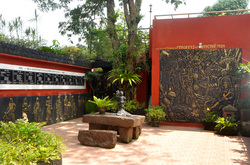
click to zoom
Along the street of Dona Aurora is the Barangay Hall of Poblacion Itaas. Art is very evident even in the barangay level. Finely displayed here are murals of Carlos "Botong" Francisco illustrating design costumes used in Philippine cinema, progress of medicine and harvest festival.
Carlos "Botong" Francisco Gallery/ Second Gallery
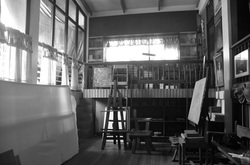
click to zoom
Owned and run by visual artist Carlos "Totong" Francisco II, Second Gallery seeks to be the focal point of young and upcoming artists of Angono by providing them a venue for their artworks. The gallery also serves as a magnet for visitors to be acquainted with the home of and personal memorabilia of National Artist, Carlos "Botong" Francisco.
Blanco Family Museum
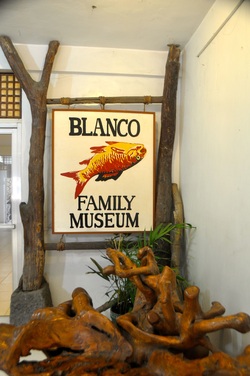
click to zoom
If street art is not enough, we will bring you to the gallery of the famous family who shared the same passion in painting. The head of the clan, renowned artist Jose "Pitok" V. Blanco, has obviously handed down to his children his creativity and talent. His wife also does paintings and all of them are known for their colorful canvasses which depict rural life. The family founded the Angono Artists Association. Indeed, the family who paints together, stays together.
Nemiranda Art House Atelier Cafe
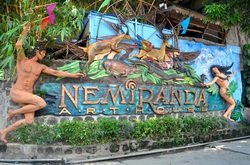
click to zoom
Visit another Angono's pride - Nemiranda Art House. Artist Nemesio Miranda displays his collection of paintings masterfully employing figurative realism portraying rural life and flokloric art. He also conducts lectures and painting workshops.
After exercising your eyes on his beautiful masterpieces, have an appetizing meal of local dishes at his newly opened Cafe and Restaurant.
After exercising your eyes on his beautiful masterpieces, have an appetizing meal of local dishes at his newly opened Cafe and Restaurant.
Ang Nuno Artists Foundation Gallery/ Perdigon Vocalan Foundation Gallery
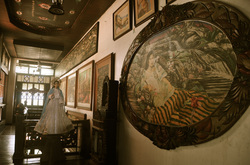
click to zoom
Located in the same street as Nemiranda Art House is Ang Nuno Artists Foundation Gallery. A vast collection of paintings, sculptures and other art forms conceptualized and made by the late Perdigon Vocalan with other independent artists from Angono and nearby towns are on display at this gallery cum restaurant.
Balaw Balaw Specialty Restaurant
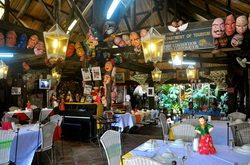
click to zoom
Established in 1982 by spouses Perdigon N. Vocalan, an Angono artist and Luzvimin L. Vocalan, a former high school teacher. The menu is extensive of authentic Filipino cuisines, particularly those dishes that are native to town of Angono and the province of Rizal.
Aside from classics like Kare Kare & Kaldereta, specialties include 12 varieties of Sinigang, native Angono fish such as Kanduli, Hito & Dalag, exotic fare like Itik, Ginataang Kuhol & Sinabawang Balut. The house specialty is Balaw-Balaw, which is a delectable appetizer made of baby shrimps, rice gruel & "angak", a herb that gives the dish its reddish color.
Aside from classics like Kare Kare & Kaldereta, specialties include 12 varieties of Sinigang, native Angono fish such as Kanduli, Hito & Dalag, exotic fare like Itik, Ginataang Kuhol & Sinabawang Balut. The house specialty is Balaw-Balaw, which is a delectable appetizer made of baby shrimps, rice gruel & "angak", a herb that gives the dish its reddish color.
Tiamson Art Gallery
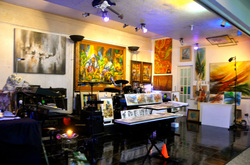
click to zoom
This art gallery houses the various art works of painter, musician and transmedia artist Orville D.R. Tiamson. A versatile artist, Tiamson's style ranges from the conventional to the new age and has experimented in various artistic presentations including drawings on paper, oil and acrylic, paintings on canvas, mixed media collages and contructions, installations, performances, music and soundworks.
Angono Petroglyphs
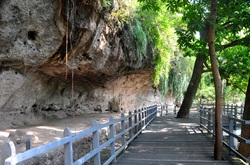
click to zoom
The Angono Petroglyphs is considered a highly significant cultural landmark because it is the oldest known work of art in the Philippines. It is included in the list of the National Culture Treasure of the country and the World Inventory of Rock Art. It was also declared as one of the most imperiled historic sites in the world by the World Monuments Watch.
Human and animal-like figures are engraved on the rockwall made of vulcanic turf, dating back to circa 3,000 BC. Although it is an archaeological treasure of high value, visitors can hardly enjoy the engravings as they are not clearly visible. A small museum is also on the site run by the National Museum of the Philippies and Municipality of Angono.
Human and animal-like figures are engraved on the rockwall made of vulcanic turf, dating back to circa 3,000 BC. Although it is an archaeological treasure of high value, visitors can hardly enjoy the engravings as they are not clearly visible. A small museum is also on the site run by the National Museum of the Philippies and Municipality of Angono.
Higantes Festival
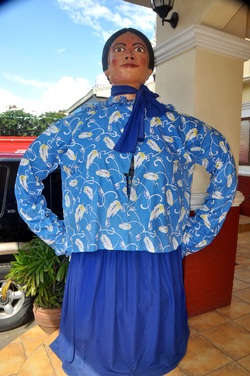
click to zoom
Join festivities every 23rd of November as Angono celebrates Higantes (Giants) Festival, where the giants made of paper mache are paraded in honor of their patron saint, San Clemente. The street event culminates in a fluvial procession on the shores of Laguna de Bay, amidst revelry that continues until the image is brought back to the parish church.
Yab Design
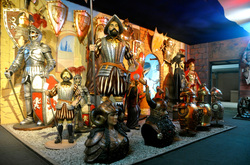
click to zoom
Modern forms of art are widely accepted in this small town. In fact, Yab Design - a company that manufactures hand made decorations, mainly out of polyester resin, reinforced with fiberglass has set up shop here. Expand your imagination as we take you to their showroom full of life size and bigger than life figurines of all sorts.

